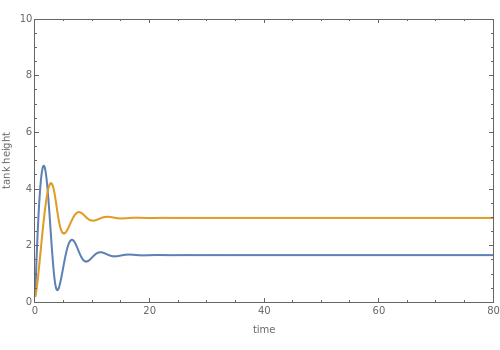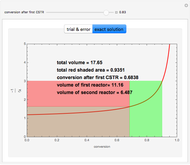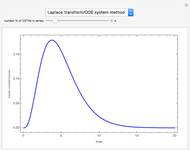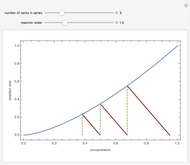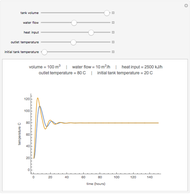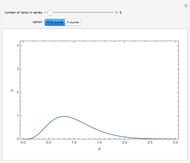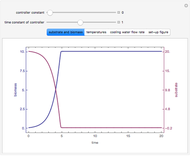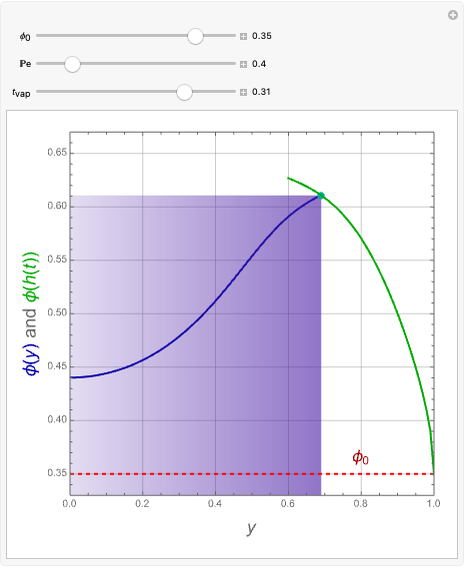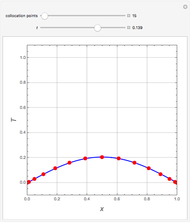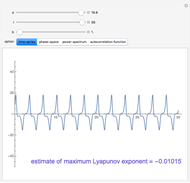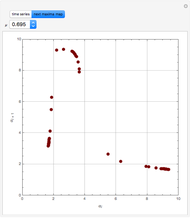Consider two tanks in series; the dynamic behavior of their heights is governed by the ODEs:
 ,
,
 ,
,
where  is the height of tank
is the height of tank  in meters,
in meters,  (set to 1 here) is the area of each tank in
(set to 1 here) is the area of each tank in  ,
,  is the inlet flow rate (the manipulated variable) into the first tank, and
is the inlet flow rate (the manipulated variable) into the first tank, and  and
and  are the outlet flow rates (expressed in
are the outlet flow rates (expressed in  ) from the first and second tank, respectively. The initial height of the liquid in each tank is assumed to be 0.25 meters.
) from the first and second tank, respectively. The initial height of the liquid in each tank is assumed to be 0.25 meters.
The flow equation is given by  where
where  or
or  and
and  is the valve constant expressed in
is the valve constant expressed in  ). It is assumed that
). It is assumed that  and
and  .
.
The setpoint for the height of the liquid (the process variable) in the second tank is chosen to be 3 meters.
The inlet flow rate is varied in order to achieve the desired setpoint value using P, PI, or PID (proportional–integral–derivative) control:  , where
, where  is the error,
is the error,  is the proportional gain, and
is the proportional gain, and  and
and  are the integral and differential time constants, respectively.
are the integral and differential time constants, respectively.
For very large  and
and  , one recovers the usual proportional control, which is usually characterized by a small offset value (i.e., the final steady state height is not exactly equal to the setpoint value).
, one recovers the usual proportional control, which is usually characterized by a small offset value (i.e., the final steady state height is not exactly equal to the setpoint value).
PI control is achieved when  is taken equal to zero. PI control can show an overshoot and dumped oscillations around the setpoint. No offset is observed and the final steady state tank height is equal exactly to the setpoint value.
is taken equal to zero. PI control can show an overshoot and dumped oscillations around the setpoint. No offset is observed and the final steady state tank height is equal exactly to the setpoint value.
The most general case is when  and
and  is not too large; one gets PID control of the second tank's height.
is not too large; one gets PID control of the second tank's height.
The Demonstration plots the height of both tanks as a function of time; the blue curve displays  and the magenta curve represents
and the magenta curve represents  .
.
[less]

